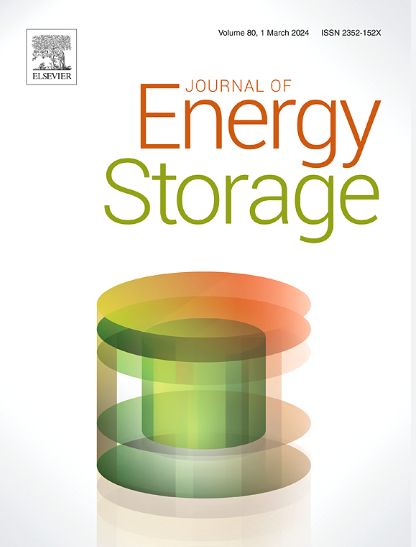Topology optimization on fin structure used in solar thermochemical heat storage reactor
IF 8.9
2区 工程技术
Q1 ENERGY & FUELS
引用次数: 0
Abstract
Thermochemical heat storage (TCHS) has the advantages of high energy density and low heat loss. In this study, parabolic trough concentrator (PTC) technology is combined with TCHS reactor. A numerical model of photothermal coupled energy storage process is established for PTC-TCHS. The fins of the reactor are designed by topology optimization method to reduce the temperature difference and improve the TCHS performance. Firstly, the effect of fin volume fraction on TCHS performance is analyzed, and the most reasonable fin volume fraction of 15 % is derived. After that, performance of the reactor with topological fins is compared with other empirically designed fins. The results show that the topological fins were effective in reducing the temperature difference by 37 %, 19.9 % and 8.5 % compared to straight, horizontal and curved fins. Meanwhile, the topological fin has the shortest reaction time of 6980 s and the highest thermal efficiency of 76.7 %. Finally, the effects of different operating conditions of DNI and reactant porosity on the topological fin reactor are explored. Under different operating conditions, the topological fin reactor always has better applicability and superiority, which demonstrate the reliability of the topology optimization method for fin design of solar thermochemical heat storage reactor.
太阳能热化学蓄热反应器翅片结构拓扑优化
热化学储热具有能量密度高、热损失小的优点。本研究将抛物槽浓缩器(PTC)技术与TCHS反应器相结合。建立了PTC-TCHS光热耦合储能过程的数值模型。采用拓扑优化方法对反应器翅片进行设计,以减小温差,提高TCHS性能。首先,分析了翅片体积分数对TCHS性能的影响,得出了最合理的翅片体积分数为15%。然后,将拓扑翅片反应器的性能与其他经验设计的翅片进行了比较。结果表明,与直翅、横翅和弯翅相比,拓扑翅的温差分别降低了37%、19.9%和8.5%。同时,拓扑翅片的反应时间最短,为6980 s,热效率最高,为76.7%。最后,探讨了不同DNI操作条件和反应物孔隙率对拓扑翅片反应器性能的影响。在不同工况下,拓扑翅片反应器总是具有更好的适用性和优越性,证明了拓扑优化方法用于太阳能热化学蓄热反应器翅片设计的可靠性。
本文章由计算机程序翻译,如有差异,请以英文原文为准。
求助全文
约1分钟内获得全文
求助全文
来源期刊

Journal of energy storage
Energy-Renewable Energy, Sustainability and the Environment
CiteScore
11.80
自引率
24.50%
发文量
2262
审稿时长
69 days
期刊介绍:
Journal of energy storage focusses on all aspects of energy storage, in particular systems integration, electric grid integration, modelling and analysis, novel energy storage technologies, sizing and management strategies, business models for operation of storage systems and energy storage developments worldwide.
 求助内容:
求助内容: 应助结果提醒方式:
应助结果提醒方式:


